ChatGPT vs Google Translate
August 12, 2023 | Author: Adam Levine
20
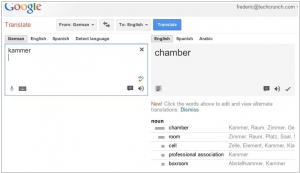
Google Translate is a free translation service that provides instant translations between dozens of different languages. It can translate words, sentences and web pages between any combination of our supported languages. With Google Translate, we hope to make information universally accessible and useful, regardless of the language in which it’s written.
See also:
Top 10 Online Translators
Top 10 Online Translators
ChatGPT and Google Translate are both language-related AI tools, but they serve different purposes and functionalities. ChatGPT, based on OpenAI's GPT-3.5 architecture, is a large language model designed for natural language understanding and generation, making it adept at carrying out conversations, answering questions, and providing contextually appropriate responses. It excels in various language tasks and can be integrated into applications, chatbots, and other interactive systems. On the other hand, Google Translate is primarily a machine translation service that focuses on translating text and speech between different languages. It utilizes powerful neural machine translation (NMT) technology to offer quick and convenient translations for a wide range of languages.
See also: Top 10 Online Translators
See also: Top 10 Online Translators
ChatGPT vs Google Translate in our news:
2023. OpenAI launches a ChatGPT plan for enterprise customers
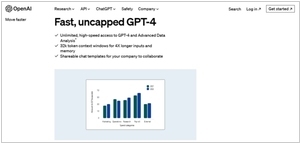
OpenAI has introduced ChatGPT Enterprise, a version of their AI-powered chatbot application geared towards businesses. Initially hinted at in a blog post earlier this year, ChatGPT Enterprise possesses the same functionalities as the standard ChatGPT, encompassing tasks such as composing emails, generating essays, and identifying issues within computer code. Priorly, Enhanced Data Analysis was exclusively accessible to individuals subscribed to ChatGPT Plus, the premium subscription tier of the regular ChatGPT web and mobile applications, which costs $20 per month. It's important to note that ChatGPT Plus will continue to be offered, as OpenAI considers ChatGPT Enterprise to be an addition that complements it. What sets it apart is the inclusion of heightened privacy and data analysis capabilities, classified as "enterprise-grade." Besides, ChatGPT Enterprise delivers improved performance and an array of customization options. This positions ChatGPT Enterprise at a comparable level to Microsoft's Bing Chat Enterprise, a recently launched chatbot service tailored for enterprise utility.
2016. Google Translate gets in-app translations on Android, offline mode on iOS
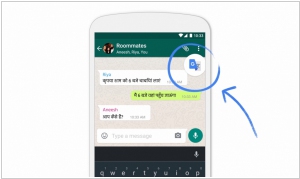
Google has introduced an update to its Translate applications for both iOS and Android devices. This latest version brings offline support to the iOS platform, a feature that has already been available on Android. Offline support proves to be particularly useful when traveling, as it eliminates concerns about a reliable internet connection. The Google team has focused on optimizing language package downloads, reducing their size by up to 90 percent. These packages now weigh approximately 25 MB and are accessible in 52 different languages. For Android users, the key addition is the Tap to Translate feature. Instead of the traditional method of copying and pasting text from apps into Translate, users can now simply copy the text, and the translation option will automatically appear. The translated content is displayed as an overlay without the need to switch between various applications.
2015. Google Translate app adds 20 more languages
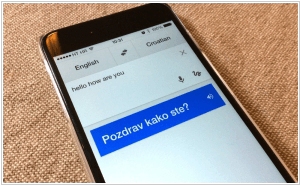
Google is expanding the capabilities of its Translate app to encompass more than twenty-five additional languages. Users will now have the ability to translate to and from English with languages such as Bulgarian, Catalan, Croatian, Czech, Danish, Dutch, Filipino, Finnish, Hungarian, Indonesian, Lithuanian, Norwegian, Polish, Romanian, Slovak, Swedish, Turkish, and Ukrainian. While Google already provides a translation feature through its website search results and directly within its Chrome browser, the demand for portable, on-the-go translation is evident. The Google Translate app offers three methods for translating text: typing the desired text, speaking the text, or using the mobile device's camera to capture and automatically translate text from signs, books, or other objects. Importantly, the visual translation feature can be used offline, eliminating the need for an internet connection.
2015. Google Translate now does real-time voice and written text translation
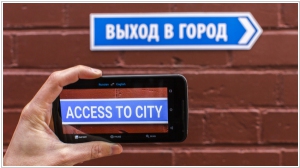
The mobile app for Google Translate on Android and iOS has received an impressive update, enhancing its capabilities even further. The latest update introduces two remarkable features: real-time voice translation and sign translation. While the app has previously offered image-based translation, these new features provide instant translation with zero delay, and the best part is that they work offline, making it incredibly useful for frequent travelers. To translate a sign, you simply need to point your camera at it, ensuring it is captured completely, and the app will promptly provide the translation. The real-time voice translation feature is equally impressive, acting as an intermediary for conversations between individuals speaking different languages. By tapping the in-app microphone once and initiating the conversation in the foreign language, the app recognizes the language and allows both parties to communicate. As the conversation progresses, the app continuously generates text-based translations in real-time, effectively breaking down language barriers.
2009. Google Translate now translates in real time
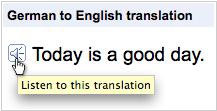
In the near future, the advancement of text and speech translation technology will become increasingly crucial for the virtual economy. Language acts as a significant barrier that hinders collaboration among talented individuals from different countries on shared projects. Therefore, we hold high hopes for Google Translate as an innovative service that breaks down this barrier. Today, Google has released a new version of the service, introducing several useful features. Firstly, the service now provides real-time translation results as you type. Secondly, when translating from any language into English, you can listen to the translated text, allowing for the practice of pronunciation. Furthermore, a Romanization feature has been added. For instance, when translating into Chinese, the translation can be read in Roman letters. Another noteworthy feature is the automatic language detection for the original text. Additionally, when you need to translate a web page, you can simply enter its URL into the text entry field.




